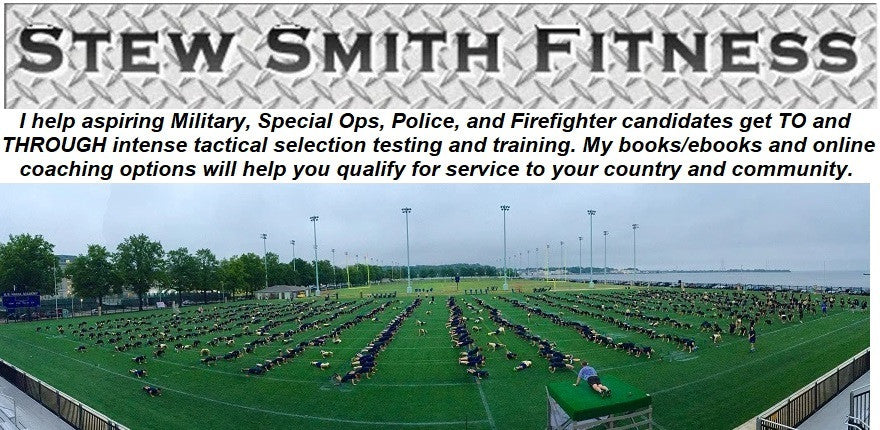There are two different types of training you must be prepared for in order to become a member of special operations of any branch of service. First, the entrance fitness test, which is typically a test of calisthenics, running and maybe swimming depending upon the branch of service. Statistics show that scoring well above the minimum standards on these type of "physical entrance exams" increases your chances of graduating from 6% up to 85%. Second, there are follow-on training cycles which were commonly referred to as Combat Conditioning Courses that are more job related tasks such as shooting, rucking, swimming with gear, obstacle courses as well as running for speed and distance.
In SEAL training as well as in the Teams, we had some great Combat Conditioning Courses. These combat conditioning courses were a bit difficult to prepare for thoroughly as many required shooting, running with gear, swimming with gear, obstacle courses, and some other job related tasking. One of my favorite events was like a "military triathlon" which required cardio-vascular endurance, strength, power, agility, precision timing, and firearms accuracy. See related article on a another version of the military triathlon.
The COMBAT CONDITIONING COURSES where we ran with our gear (about 75lbs dry) for at least 5 miles, had to shoot expert on a firing range after navigating through an obstacle course, and then swim two miles towing all the gear and weapons as well. Then, we ran another 5 miles but one person in our group of five had to be carried as the “injured man drill”. That is combat conditioning! Having the ability to conduct certain skills while under physical stress and exhaustion is what I call combat conditioning. This is the type of fitness and mental toughness required to be successful in most sports, martial arts, and military Special Forces. It is not needed as a daily exercise, but you can definitely add this type of "monster mash" PT once every 2 weeks to properly prepare your body for the grind of training.
This eBook fitness guide is what I consider an advanced level of fitness routine – NOT for beginners but perfect for folks who are involved with a martial arts regimen and have a basic foundation for fitness already. If you want something tougher and more branch specific – see any of my Navy SEAL Workout , USMC RECON, Air Force PJ / CCT, or Army Special Forces / Ranger Workouts .
Having developed programs that assist people in martial arts, athletics, and military and law enforcement for the past 15 years, I have found that cardio-vascular endurance and muscle stamina through PT supplemented with weight training is the number one and two focus area for success. Running, swimming, biking, cross-country skiing are great cardio vascular endurance activities and weights and high repetition calisthenics / rope climbs are best for muscle stamina. Though weight training can be used to develop muscle stamina, it is not necessary and should be used to balance out auxiliary muscles groups. So learn how to train effectively with and without heavy weights too.
I often receive emails from future military members who say they are former high school athletes who want me to critique their weight lifting routine as they prepare for Bootcamp. Being a former weightlifting, football player myself, I stepped back into time some eighteen years and saw many of the same things I did to prepare for Plebe Summer at the Naval Academy. The only bad thing about the plan and the way I prepared for the military and combat is that it was the wrong way to train for the military style fitness. For more info on why you should focus on PT / Cardio prior to training see Spec Ops Prep
Prepare for any military service / law enforcement program and ensure you are in top physical shape with this advanced fitness program. This workout features high rep weight training, hardcore PT, running, swimming, ruck marching, 8 count pushups, and many more challenging exercises.
